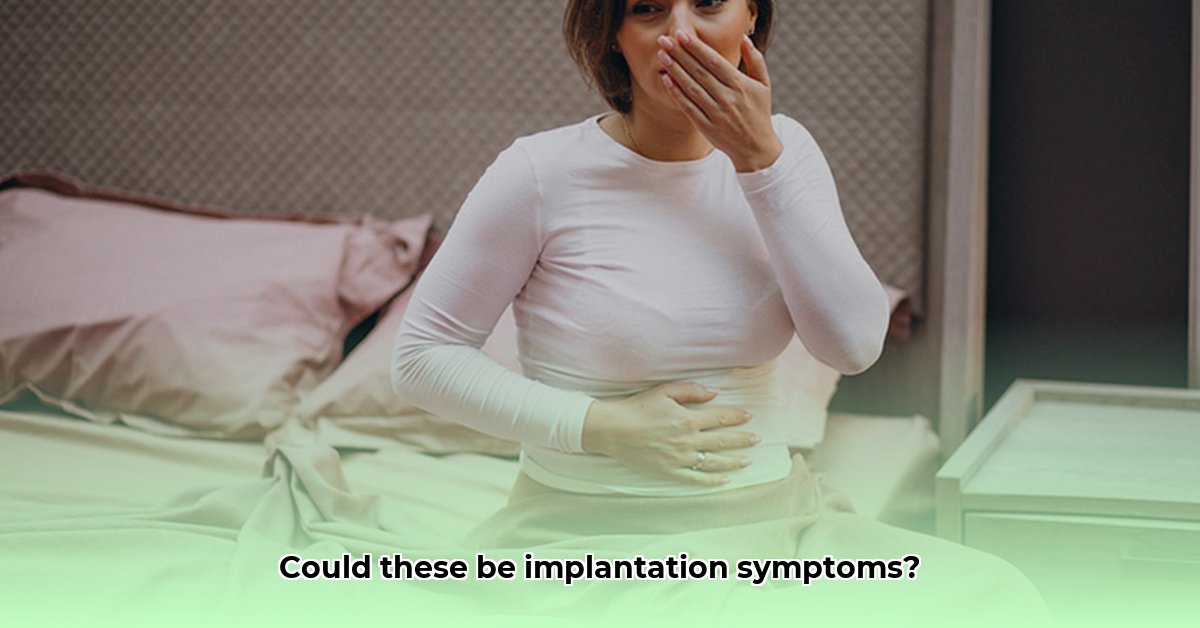The two-week wait after an embryo transfer is a mix of hope and anxiety. This guide offers day-by-day insights into potential symptoms, emphasizing that every experience is unique. Remember, this information is for support and shouldn’t replace advice from your fertility specialist.
Day-by-Day Breakdown: What to Expect After Embryo Transfer
The two-week wait can feel like an emotional rollercoaster. While every woman’s experience is different, here’s a general idea of what you might encounter. Always consult your fertility specialist for personalized advice.
Days 1-4: Early Days
Congratulations on your embryo transfer! The first few days are usually pretty quiet. You may experience mild cramping, similar to period cramps, likely due to the procedure. Light spotting (implantation bleeding) is possible, but it doesn’t guarantee implantation. Fatigue and mood swings are also common due to hormonal shifts. Focus on rest and gentle self-care.
Days 5-9: Mid-Week
Hormonal changes may become more noticeable. Breast tenderness, frequent urination, constipation, headaches, nausea, and sore nipples are all possibilities. Again, implantation bleeding might occur. Resist the urge to overanalyze every sensation; symptoms vary greatly between individuals.
Days 10-14: The Home Stretch
The final days can feel the longest. Symptoms may intensify, or new ones could emerge. Increased hunger or thirst, continued cramping, mood swings, and breast changes are possible. Nausea and vomiting might also appear due to hormonal shifts. A positive pregnancy test is the only way to confirm pregnancy. Prioritize patience and self-care. Remember, lack of symptoms doesn’t indicate failure.
Beyond Day 14 (and FET Considerations)
If you suspect you’re pregnant after the two-week wait, early pregnancy symptoms like morning sickness (anytime of day), mood swings, dizziness, headaches, a heightened sense of smell, and continued breast changes might occur. These could indicate rising pregnancy hormones. For those who’ve had frozen embryo transfers (FET), the experience is generally similar, though individual responses and medication protocols can influence symptoms.
The Importance of the Blood Test (and Debunking Myths)
A blood test, usually about two weeks after the transfer, is the only definitive way to confirm pregnancy. Symptoms, or lack thereof, aren’t reliable. Many women have symptom-free healthy pregnancies. Implantation bleeding doesn’t guarantee success, and its absence doesn’t signal failure.
Managing the Emotional Rollercoaster: Coping Strategies
The two-week wait is undeniably stressful. Prioritize self-care:
- Gentle Exercise: Light walks, yoga, or stretching can ease stress.
- Mindfulness and Meditation: Even a few minutes daily can make a difference. Apps like Calm or Headspace can guide you.
- Journaling: Expressing your feelings can be therapeutic.
- Support Groups: Resolve: The National Infertility Association (https://resolve.org/) offers valuable resources and support.
- Connect with Loved Ones: Share your feelings with your partner, family, or close friends.
- Limit Internet Searches: Avoid Dr. Google; stick to reputable sources like the Mayo Clinic (https://www.mayoclinic.org/) or Harvard Health Publishing (https://www.health.harvard.edu/).
What to Expect Day-by-Day: A Quick Guide
| Day(s) Post-Transfer | Potential Symptoms | What to Do |
|---|---|---|
| 1-4 | Mild cramping, light spotting, fatigue, mood swings | Rest, practice self-care. |
| 5-9 | Breast tenderness, frequent urination, constipation, etc. | Continue self-care practices. |
| 10-14 | Increased hunger/thirst, continued symptoms | Prepare for your blood test, stay calm. |
| 14+ (If pregnant) | Morning sickness, dizziness, headaches, etc. | Contact your specialist. |
When to Call Your Doctor
While many symptoms are normal, contact your doctor for:
- Severe cramping or heavy bleeding: More than light spotting.
- High fever: A persistent fever above 100.4°F (38°C).
- Severe pain: Any sharp, unusual, or persistent pain.
Disclaimer: This information is for educational purposes only and doesn’t substitute professional medical advice. Consult your fertility specialist for personalized guidance.
- Weight Loss Supplements That Work and Those That Dont - October 31, 2025
- Male Eating Disorders Often Missed but Increasingly Prevalent - October 29, 2025
- Males With Anorexia Nervosa Have Distinct Symptoms and Treatment Needs - October 28, 2025










